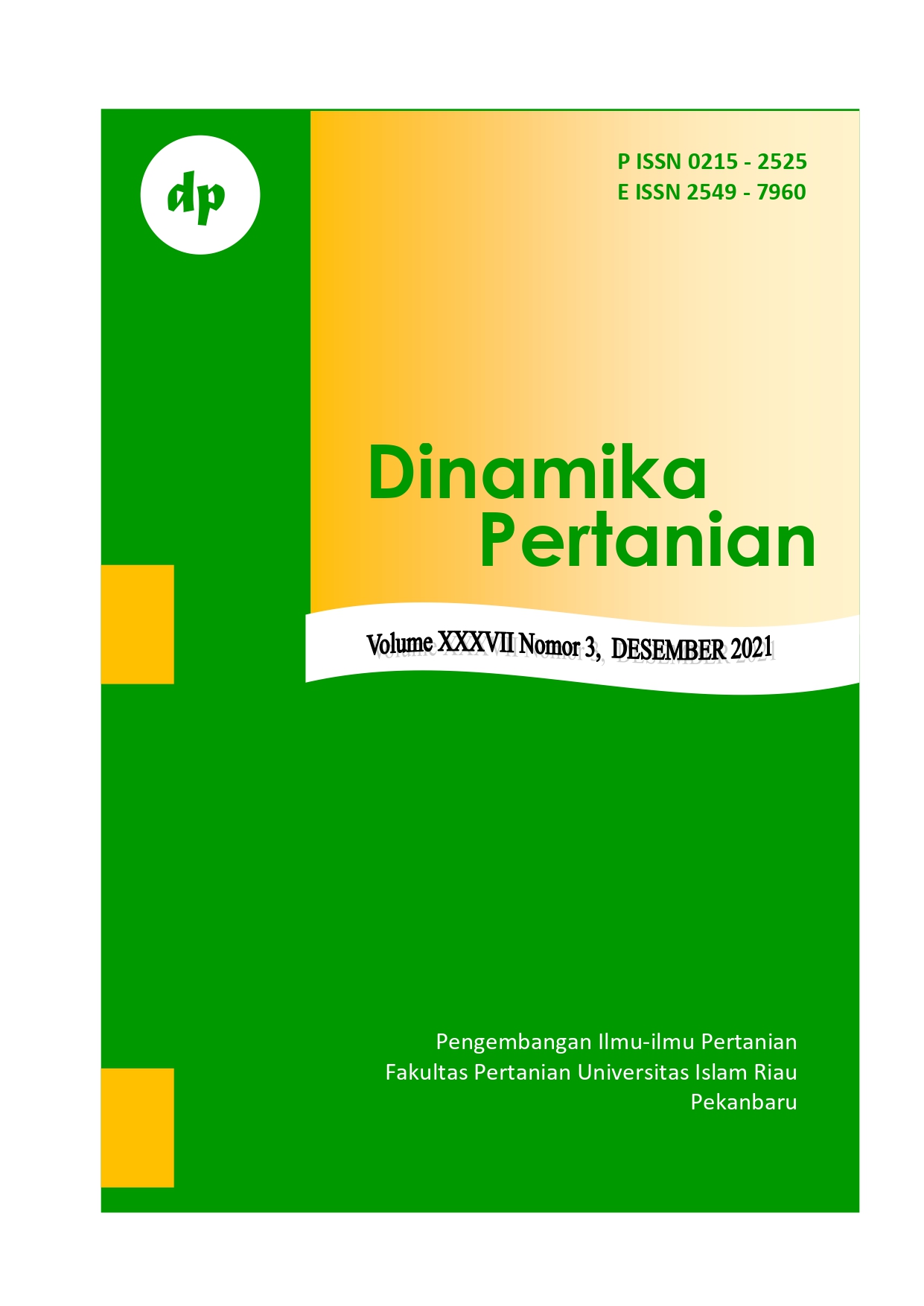PERBAIKAN SIFAT KIMIA TANAH DENGAN APLIKASI KOMPOS ALANG – ALANG PADA GAMBUT TERBAKAR DAN PENGARUHNYA TERHADAP PERTUMBUHAN DAN PRODUKSI KACANG HIJAU (Vigna radiata L.)
DOI:
https://doi.org/10.25299/dp.2021.vol37(3).8932Keywords:
Alang-alang compost, Burned peatland, Mung beansAbstract
This research aimed to determine the effect of alang-alang compost application on burned peatland to cultivate the soil chemical properties, growth, and production of mung beans (Vigna radiata L.). The research has been carried out in the Auto Agronom of the Faculty of Agriculture, Universitas Islam Riau from October 2018 to April 2019. The design in this study was a Factorial Completely Randomized Design (CRD) consisting of 2 factors, G (burned peatland) and P (alang-alang compost application). The results showed that the application of alang-alang compost toward burned peatland was able to cultivate the soil's chemical properties in the form of increasing pH, C-organic, N-total, P2O5, K-dd, Mg-dd, Ca-dd, KTK, and reducing C/N Ratio, Al-dd, Total Pb. The best results were obtained by applying alang-alang compost 375 g/polybag compost on burned peatland at the depth of 0-25 cm. The treatment interaction of burned peatland and alang-alang compost has a significant effect on the parameters of Plant Height and Dry Weight of Seeds per Plant, with the best treatment application of alang-alang compost 375 g/polybag on burned peatland at the depth of 25-50 cm. The main influences of alang-alang compost application have a significant influence on Plant Height and Dry Weight of Seeds per Plant, the best treatment was the application of alang-alang compost 375 g/polybag.






